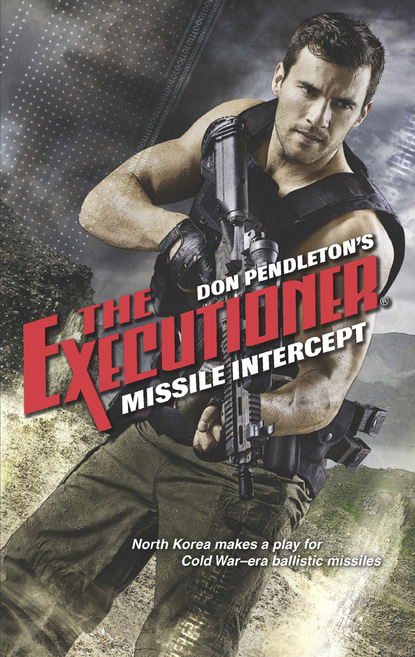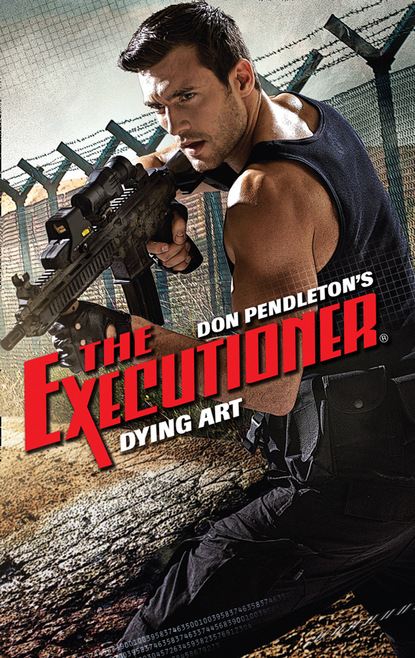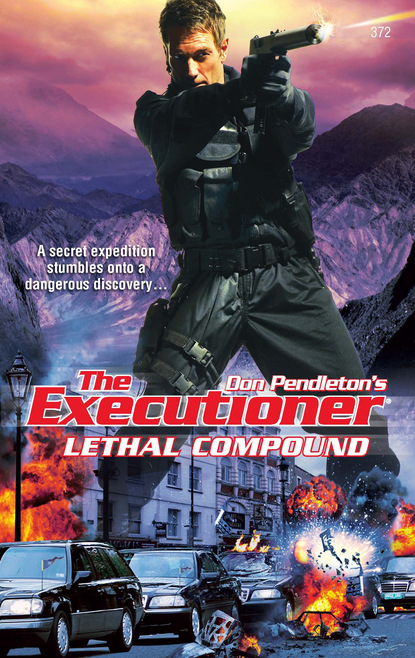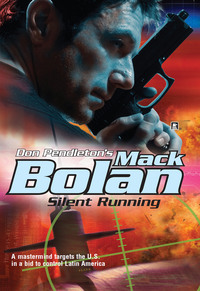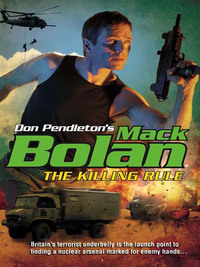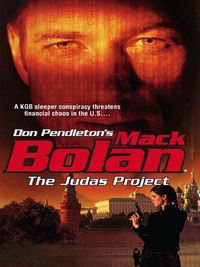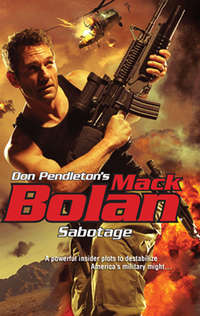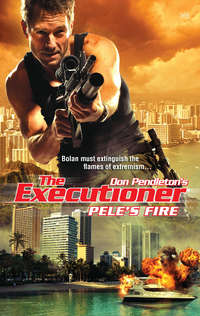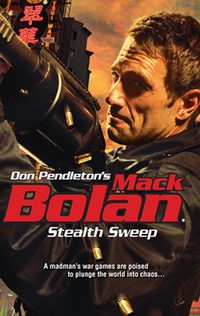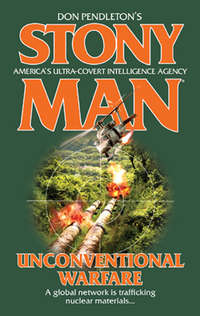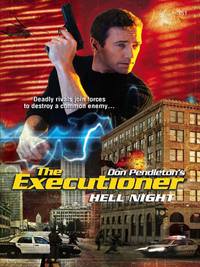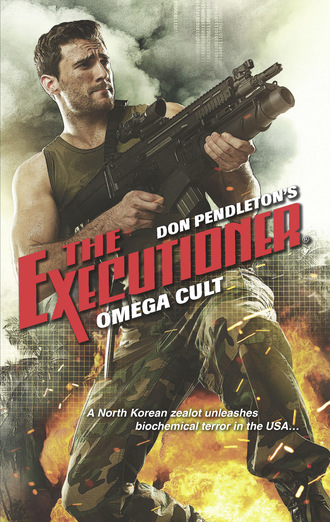
Полная версия
Omega Cult
An earpiece for the laptop solved his problem with potential eavesdropping as Bolan slipped Brognola’s CD-ROM into the laptop’s slot and waited for its menu to appear. Four files popped up a moment later, labeled A through D.
The first broke down the history of the Omega Congregation, founded in July of 1998 by Shin Bon-jae. It started small, a curious religious sect that merged Shin’s nationalist stance on politics with the peculiar notion—previously under wraps it seemed—that he’d been visited by Jesus Christ in person, not just once but half a dozen times. The risen Lord allegedly suggested, then insisted, that Shin share his message with the masses, using the financial blessings already bestowed on him by God, to rally wide support for a reunion of the two Koreas after half a century. The chief means of achieving that reunion, Jesus said—through Shin—would be an arduous campaign of prayer.
Over time, a list of right-wing politicians had signed on to the Omega Congregation’s cause, lending their names and paying dues according to the status of their salaries. Meanwhile, the movement spread through lower levels of society, encouraged tacitly by Seoul’s prevailing leaders as a means to counteract threats and demands from its northern rival Kim Jong-il and his successor. The odd part, given its specific politics, was the Omega Congregation’s subsequent expansion through East Asia, into Europe, North America, and even to Australia, where a small but thriving chapter operated from an office suite in Melbourne.
Initially bankrolled by founder Shin via a paper company created for that purpose, the Omega Congregation was a self-supporting entity by August 1999, turning a profit—which, allegedly, it spent on missionary work—by April of 2000. Granted tax exemption as a bona fide religion in the States, it skated on the thin ice of political persuasion but survived investigations by Internal Revenue in 2002, ’04 and ’09. At that point high-priced lawyers formally protested federal harassment of the cult and won their case in 2011.
And it had been smooth sailing after that—at least, until three members of the sect released sarin nerve gas in LA
The list of dead, including terrorists, had reached 217 when Bolan checked the internet after arriving at his airport gate. At least three dozen more victims were critical, clinging to life in ICU, while close to ninety others were described by hospital authorities as being in “stable but guarded” condition.
It was not the worst terrorist attack in US history, but coming out of nowhere as it had, without a hint of any links to radical jihadists or homegrown fascist malcontents, it had taken the country and its leaders by complete surprise. No one had been alert for trouble from Korean immigrants, much less from those allied with a conservative religious sect.
File “B” relayed the history of Shin Bon-jae in greater detail than Brognola had provided over lunch. Born to humble parents in Gyeonggi Province in 1958, Shin made his way to Seoul as a teenager, worked various jobs to make ends meet, then came up with a stake from who knew where to buy a failing carpet factory. He’d turned the company around in record time and soon expanded. First to trucking, as a mode of transportation for his product, then diversifying into other types of manufacturing, founding a two-ship transport line that had expanded over time a hundredfold, and making lucrative investments with advice from certain wealthy friends in industry and politics. His first newspaper, Seoul’s Truth in Action, had been launched in 1970, spreading globally over the next twelve years as Shin founded affiliated papers on six continents, in nineteen languages.
His great conversion to religion, never indicated in his public statements previously, came a week after Shin’s fortieth birthday. On July 4, 1998, he was prepared to share the word. He put his money where his mouth was at the start, and was rewarded over time by one more profit-making branch of his empire. How many other bootstrap billionaires were ranked among the richest men on Earth and heralded by followers as an enlightened mouthpiece of Almighty God?
Thus far, there’d been no hint of Shin or his hand-picked lieutenants preaching violence, although the Congregation’s doctrine did maintain that the reunion of fractured Korea might require apocalyptic sacrifice. In Seoul, such rhetoric was not unusual: leaders of South Korea had been talking war since 1948 and—unknown to most Americans—illegal border crossings by the troops of first president Rhee Syng-man had motivated North Korea’s Kim Il-sung to order an invasion of the South in 1950, starting the Korean War and ultimately drawing Red China into the fight. Outside Korea, Congregation speakers kept it on the down-low, pressing would-be members to donate whatever they or their extended families could spare to help the cause.
File “C” picked up with Lee Jay-hyun, Shin’s front man in America. At thirty-two, he’d climbed the Congregation’s ladder rapidly, from raw recruit to office aide in Seoul, promoted once again after he’d saved Shin’s life from a demented gunman in October 2002 outside the cult’s Heavenly Palace in central Seoul’s Jongno-gu district. Elevated to the august rank of second soul, Lee soon turned up in San Francisco with a work visa identifying him as a religious missionary. One year later that had been converted to a green card naming him as a permanent resident of the US.
Lee’s church and headquarters in San Francisco was located in Ashbury Heights, on a hill south of the once-notorious Haight-Ashbury neighborhood. Bolan had pegged it as one of his first stops when he reached the coast.
File “D” was sparse but interesting, focused on Park Hae-sung, reputed businessman from Seoul, suspected—as Brognola had explained—of being an illegal agent of North Korea’s State Security Department. Since North Korea had no consulates in the United States, the FBI and CIA had no hard proof of any links between Park and the SSD, but agents of the National Security Agency claimed he was in contact with Pyongyang via covert telephones and radio broadcasts, pending decryption that would give an indication of their contents.
Evidence that would have bolstered an indictment: zero.
It was one more thing for Bolan to determine when he got to San Francisco, and he hoped he wouldn’t leave his heart—or body—there when he was done.
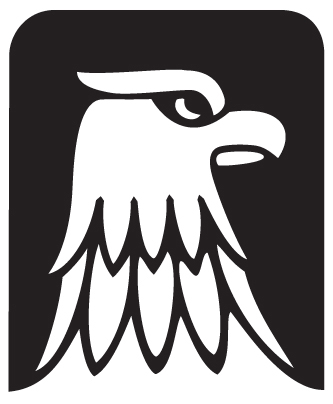
2
San Francisco International Airport
Bolan’s nonstop flight from Reagan National to Frisco by the Bay consumed five hours’ airtime, plus thirty minutes for takeoff and landing. He’d covered 2,439 miles and four time zones, touching down officially two hours after takeoff from Virginia. Add another hour to get off the plane, collect his rented Volkswagen Passat and find his way out of the airport, and he still felt as if he’d lost time.
Unknown to Bolan’s airport rental agent, the Passat she gave him had been arranged through Stony Man with a contract associate in San Francisco. The four-door sedan came fully loaded from the factory, but in its trunk were certain items not anticipated by the manufacturer or rental company. Bolan discovered them after he pulled into the deserted corner of a shopping center parking lot in San Bruno and opened the trunk.
The trunk contained two standard duffel bags. In one, he found an M-4 carbine with a telescoping stock, an Advanced Combat Optical Gunsight, an AN/PEQ-2 Target Pointer/Illuminator/Aiming Light and twenty spare 30-round magazines filled with 5.56 mm NATO rounds.
The second bag held Bolan’s sidearms and the holsters to support them: a DE44CA—Desert Eagle .44 Magnum California—the Israeli pistol’s only model certified for sale inside the Golden State, and a Beretta 93-R selective-fire handgun. While deemed obsolete by military purists, last manufactured in 1993, the 93-R had served Bolan well in the past. Included in the second bag were two dozen 20-round Beretta magazines and an equal number of 8-round mags for the big Desert Eagle.
By the time he left San Bruno, westbound into San Francisco proper, Bolan was dressed to kill with the Beretta in fast-draw armpit leather, gun beneath his left arm, two spare magazines beneath his right. The other weapons rode behind him on the Passat’s floorboards, within arm’s reach of the driver’s seat. If he was stopped by the police—unlikely, but an outside possibility—his driver’s license from Virginia, made out to “Matthew Cooper,” would withstand a visual inspection and a check for warrants through the FBI’s National Crime Information Center. If the probe went any further, his employment record as a sales rep for a pharmaceutical concern in Arlington was also verifiable by phone, routed to Stony Man.
The point, of course, was not to be discovered, stopped or questioned by authorities.
Right now, though, Bolan’s problem was a church of sorts, allegedly connected to the massacres committed by three of its members in Los Angeles, 347 miles southeast of San Francisco. That, and the alleged link between Lee Jay-hyun’s Omega Congregation and a rumored spy for North Korea.
Bolan personally had no quarrel with any doctrine, sect or cult until they crossed the line belief into criminal action. No churchgoer himself, he had a broad view of morality as such and privately disagreed with many statutes punishing crimes the law labeled malum prohibitum—“wrong” simply because they were prohibited—rather than malum in se—“evil in itself.” He did not disapprove of gambling, prostitution and the like for their own sake, but cracked down hard wherever victimless crimes were employed by evil men to fatten felonious coffers and promote more sinister activities: extortion, murder, human trafficking, enslavement of the innocent with drugs or terrorism.
And when Bolan drew a line, it was a dead line in the classic Old West sense.
His enemies who crossed it generally wound up dead.
Ashbury Heights, San Francisco
AMERICAN HEADQUARTERS FOR the Omega Congregation stood on Delmar Street, west of Buena Vista Park. Stately homes in the neighborhood listed with Realtors for a median price of $2.6 million and normally sold for an average $1.2 million after various negotiations, light-years away from nearby Haight-Ashbury with its 1967 Summer of Love reputation and its swift decline thereafter into hard drugs, occupation by the outlaw biker gangs and frequent raids by the police and Feds. The 1970s brought renovations and an unexpected renaissance of standup comedy, but “Hashbury” still lagged far behind its gentrified southern neighbor in terms of outward style and dependable property values.
Ashbury Heights, in short, had been the perfect place for Lee Jay-hyun to plant the seeds of the Omega Congregation and watch them bloom.
Not that his neighbors were receptive to a new Eastern religion springing up among them, with the automatic stigma that attached to gurus, chanting, incense and the like. They had already watched the Hare Krishna movement from a cautious distance, noting its devolution from a peaceful group of peaceful supplicants in saffron robes into public charges of blackmail and extortion, embezzlement, even gunrunning and murder. And those were Hindus, members of a widespread, prominent religion in the East.
With that in mind, what were the WASPs of Ashbury supposed to make of a newfangled sect arriving in their midst full-blown, without a hint of warning from Korea?
Still, after a rocky start, most residents had made their peace with the Omega Congregation, noting that its members did not panhandle or proselytize on the streets or in malls, inflicting themselves upon strangers. No strange smells or noises emanated from their house on Delmar Street that would have sent property owners running to their pricey lawyers with a public nuisance claim. Police were never summoned to Lee’s address.
This day, a guest was closeted with Lee inside his third-floor office at the combination house and temple. Lee was seated in a high-backed swivel chair behind an elevated desk carved from jatoba—called “Brazilian cherry” in the States—extracted from the dwindling Amazonian rainforest. Facing him, his smaller chair designed to let Lee peer down his short nose at any visitors, sat Park Hae-sung.
“You came in through the back way?” Lee asked.
“As always,” Park replied.
“And took the usual precautions to avoid a tail?”
“Of course.”
Both knew that Park was subject to surveillance by a list of US law-enforcement agencies. So far, they hadn’t laid a glove on him, but that was not from lack of trying. Park assumed his phones were tapped, relying on bulk purchases of burner cells from Walmart that he deemed untraceable, routing his rare emails through an anonymous server based in Denmark. Whenever possible, he spoke to Lee in person, the most risky mode of all.
“My guess is that you wish to talk about Los Angeles,” Lee said.
“Indeed,” Park replied. “We need to follow up with more attacks.”
“I’ve spoken to my master,” Lee replied.
“You actually call him master?” Park cut in, a challenge in his tone.
“It’s only fitting for a man in his position,” Lee replied.”
“If you say so, comrade.”
“I’ve told you more than once, I’m not a communist,” Lee said.
“And yet, you’re helping us. You and your holy master.”
“It is unwise to mock a man in his own house,” Lee cautioned Park.
“No mockery intended, I assure you. You must understand that I was raised to treat religion—all religions—with the same disdain. Marx says they are the opiate of peasants, used by their true masters, the industrial elite, to hold them in positions of subservience.”
“If you wish to quote your manifesto, should I answer you with texts from the Bhagavad-Gītā?” Lee asked.
“Let us spare each other from that fruitless argument,” Park said, “and focus on our business together.”
“Very well. My primary soul is concerned about the heat resulting from the LA incidents. All three participants have been connected to the Omega Congregation, as you know.”
“And did we not expect that?” Park seemed disappointed by Lee’s answer. “It was planned to paint the three as infiltrators planted in your cult—”
“Our sect,” Lee said, correcting him.
“My most sincere apology.” Park’s contrition was nowhere evident in his demeanor or his voice. “Three infiltrators in your sect, planted by South Korea’s NIS.”
Park referred to the National Intelligence Service, initially launched as the Korean Central Intelligence Agency in 1961. It was renamed the Agency for National Security Planning twenty years later, finally switching to the NIS label in 1999 without revising much in its outlook or former methods of collecting information.
“That is one of Master Shin’s primary difficulties with the plan. Observers know the NIS has worked with the Omega Congregation time and time again. Why would they suddenly subvert us? Far more likely would be sabotage by your own agency.”
“Logic need not confuse the matter,” Park replied. “Perhaps the move was made by rogues within the NIS. Who knows? Who even cares? A bit of speculation in the Washington Inquirer and your master’s other news outlets should set the stage for what comes next.”
“And none of that shall happen without full approval from the primary soul, as you knew well enough when we began.”
“He was on amenable terms at that stage.”
“And he still may be, but the reaction to Los Angeles, although expected, has included calls in Congress for a full investigation of the Congregation. That jeopardizes my relationship to you, as well as your remaining in America.”
“We take precautions, do we not?” Park asked.
“And yet I hear from one of my people employed with San Francisco PD that federal agents are always watching you.”
“Which is exactly why we take precautions,” Park replied, sounding a trifle testy now.
“But risks are multiplied today. Nothing seems innocent, nothing coincidental, since the sarin was released.”
“You’re having second thoughts,” Park said. “Buyer’s remorse. That is unwise.”
“I hope that is not meant to be a threat,” Lee cautioned Park.
“Of course not, brother.”
“We are not brothers until you have joined the Congregation, Captain.”
“I do not use that title here,” Park said. “Hardly at all, in fact, except on ceremonial occasions in Pyongyang.”
“It still applies, however, does it not?”
Park dipped his head, humble acknowledgment of his rank in the SSD. “But I do not command you or the Congregation. I suggest continuing a course of action that we have agreed upon, while you appear to have cold feet.”
“That is an American expression I have never fully understood,” Lee said.
“It means—”
“I know its meaning,” Lee cut off his guest. “It is the pointless reference to feet I do not grasp.”
“Americans,” Park answered back. “What can I say?”
“Indeed.” They might have shared a laugh at that, if their present dilemma weren’t so serious.
Lee forged ahead, telling his visitor, “I simply doubt the wisdom of a new offensive now, so soon after the first.”
“Momentum is our goal. How else can we—”
“Propel our sundered nation into action,” Lee completed it for Park. “I know. But if the final vote from Master Shin is negative...”
“You’ll ask him one more time, at least, won’t you?” Park pressed.
“I will, tonight. But don’t expect a miracle.”
“Aren’t miracles the province of religion?” Park inquired.
And now Lee had to laugh at that. He had no more sincere devotion to the Omega Congregation than he had to Scientology or any New Age sect created as a tax dodge by its authors. All the mumbo-jumbo Lee espoused and parroted was simply propaganda dictated by Shin Bon-jae from Seoul, a means toward ultimate reunion of Korea’s separated nations.
“If we’re finished here...” Lee said.
“For now.” Park rose from his chair while Lee remained seated behind his desk, a modern small-scale potentate. “But we shall speak again, and soon.”
“As always, Captain Park, I shall be looking forward to it. In the meantime, I shall speak to Shin and let you know what he decides.”
“And I shall pass on his decision to my headquarters. No doubt, if he reneges at this point, Pyongyang will be disappointed.”
Meaning furious, and both men knew what that meant. The Supreme Leader did not take bad news well. He valued blind obedience and punished those who crossed him, whether it was a minute infraction of some order or a major breach of protocol. Forgiveness was not part of the vocabulary taught to him by his notoriously brutal father.
Lee did not wish to make an enemy of North Korea’s leader, but neither did he relish acting as a Judas to his master, Shin Bon-jae. Lee owed his present wealth and status to the founder of the Omega Congregation and could not forget that lightly.
On the other hand, he realized, there was a clear and present danger that his role within the cult would lead to his destruction as police closed in on those responsible for the Los Angeles attacks.
Was there a third alternative, between betrayal of his master and an all-out war with Pyongyang?
That would require more thought and Lee knew he was swiftly running out of time.
* * *
BOLAN HAD THE place staked out, his VW Passat parked on a corner that permitted him to see the front door of the Congregation’s headquarters and to watch the entrance of a narrow alley at the rear, designed for garbage pickups but also available for private entry through the three-story building’s back door. When Park Hae-sung emerged from that alley, driving a gray Mercedes-Benz, Bolan knew him on sight and gave the North Korean half a block before he started following.
No one knew better than Mack Bolan how the various US intelligence agencies had failed his country over time. Indeed, Bolan had even fought against rogue members of the CIA when they’d stormed Stony Man Farm, killing the second great love of his life and leaving other members of the Farm team gravely injured. Still, for all of that, he did not automatically discount their naming of a foreign national in the United States as something more than a respectable and straitlaced businessman.
Hard evidence condemning Park Hae-sung? So far, by Hal Brognola’s own admission, it was slim to nonexistent, but the smell was there, and Bolan had himself confirmed Park’s link to Lee Jay-hyun’s chapter of the Omega Congregation. Was it mere coincidence the two men meeting within two days of the sarin slaughter in Los Angeles?
Bolan was skeptical.
He trailed Park from Ashbury Heights, southwestward, through the Mission District to Portrero Hill, a residential district known for its panoramic views of the San Francisco Bay and city skyline. The fact that Park Hae-sung lived there—his address on Rhode Island Street confirmed by Hal Brognola’s file—told Bolan that, if not exactly rich, Park wasn’t strapped for cash.
Bolan tired of watching Park’s house after twenty minutes on the street, with no suspect arrivals dropping in, and decided his time was better spent preparing for a strike on Lee Jay-hyun and his cult’s headquarters. If his luck held, he might have time to question Lee concerning his relationship to Park. If not, he’d double back to Park’s address, confront the likely North Korean agent in his lair and squeeze the information out of him, by any means required.
His problem would be cracking the Omega Congregation’s headquarters. Not physically—Bolan had come equipped for that, except for lacking stun and frag grenades—but he’d already worked out an alternative to cover that deficiency. His main concern was missing knowledge of how many cultists occupied the building at a given time, their ages and sex, and how many of those were privy to details about the sarin murders in LA He guessed that only certain members of the sect, primarily its leadership, were in the know on that score. Whenever possible, Bolan worked hard to minimize unnecessary casualties.
The trick would be flushing most of the occupants outside while leaving him alone, however briefly, with the man in charge, then getting out again before a flying squad of cops rolled in to lock down the neighborhood.
It would be difficult and dangerous, but not impossible for a committed warrior with the skill to pull it off. Before he tackled the job, though, Bolan needed to shop for supplies.
Adjust. Adapt. Then act.
A combat soldier’s words to live by on the battleground.
While trailing Park, Bolan had spotted the supply outlets he’d need for his strike and guessed that he could be on site, ready to go, within the next half hour, give or take.
He twisted the VW’s ignition key and put the Passat through a tight, illegal U-turn with no traffic to oppose him, heading back the way he’d come to reach Ashbury Heights.
It wasn’t as if Lee Jay-hyun was sitting home and waiting for him, after all.
No one expected Bolan when it came to a takedown.
Surprise was elemental for the Executioner.

3
Ashbury Heights
It was cocktail hour on Delmar Street—the Molotov variety. In lieu of ready-made grenades, Bolan had finished his last-minute shopping and was ready to proceed as planned.
His first stop was a gas station, where he bought a two-gallon plastic can and filled it at the pump with regular unleaded. When he ducked inside to pay his tab, he added a box of fireplace matches, extra-long, together with a roll of black duct tape.
Next up, he hit a liquor store, bought two bottles of the cheapest red wine he could find and poured their contents into the store’s Dumpster before he got back in his car. A blotchy-faced transient, watching him desecrate the vino, simply shook his graying head and muttered, “That ain’t right, man. That ain’t right.”




